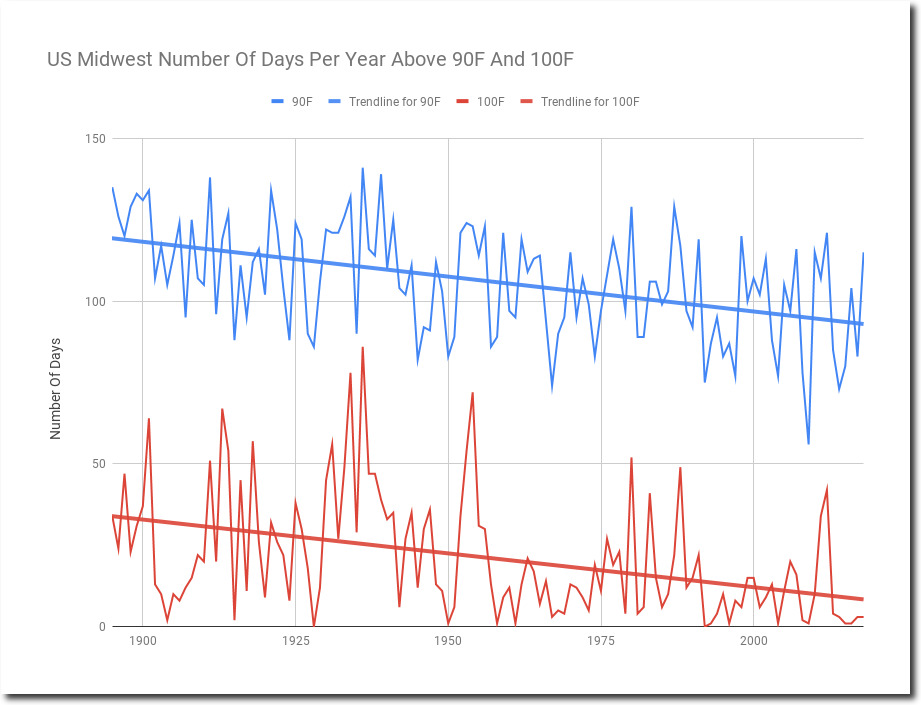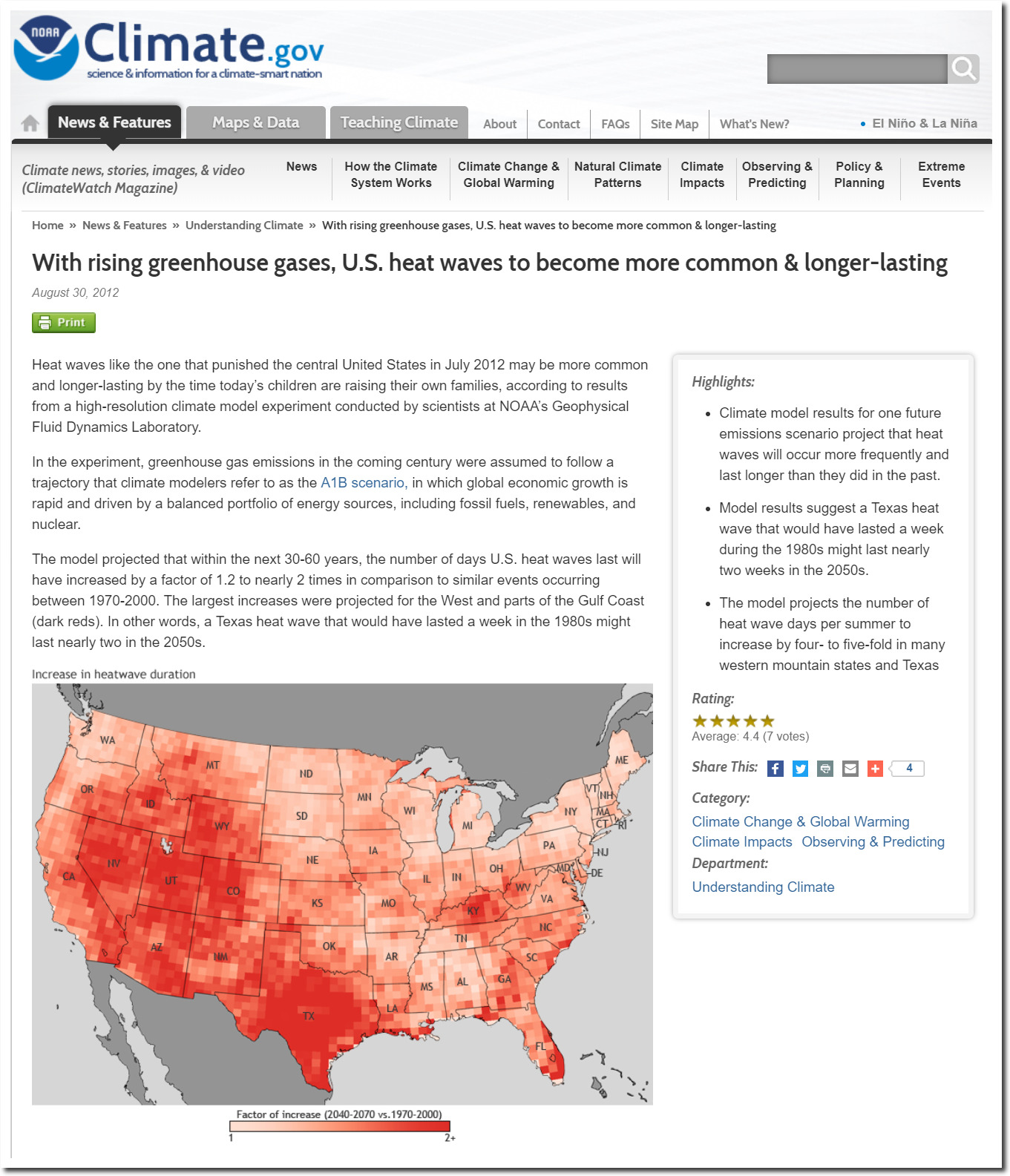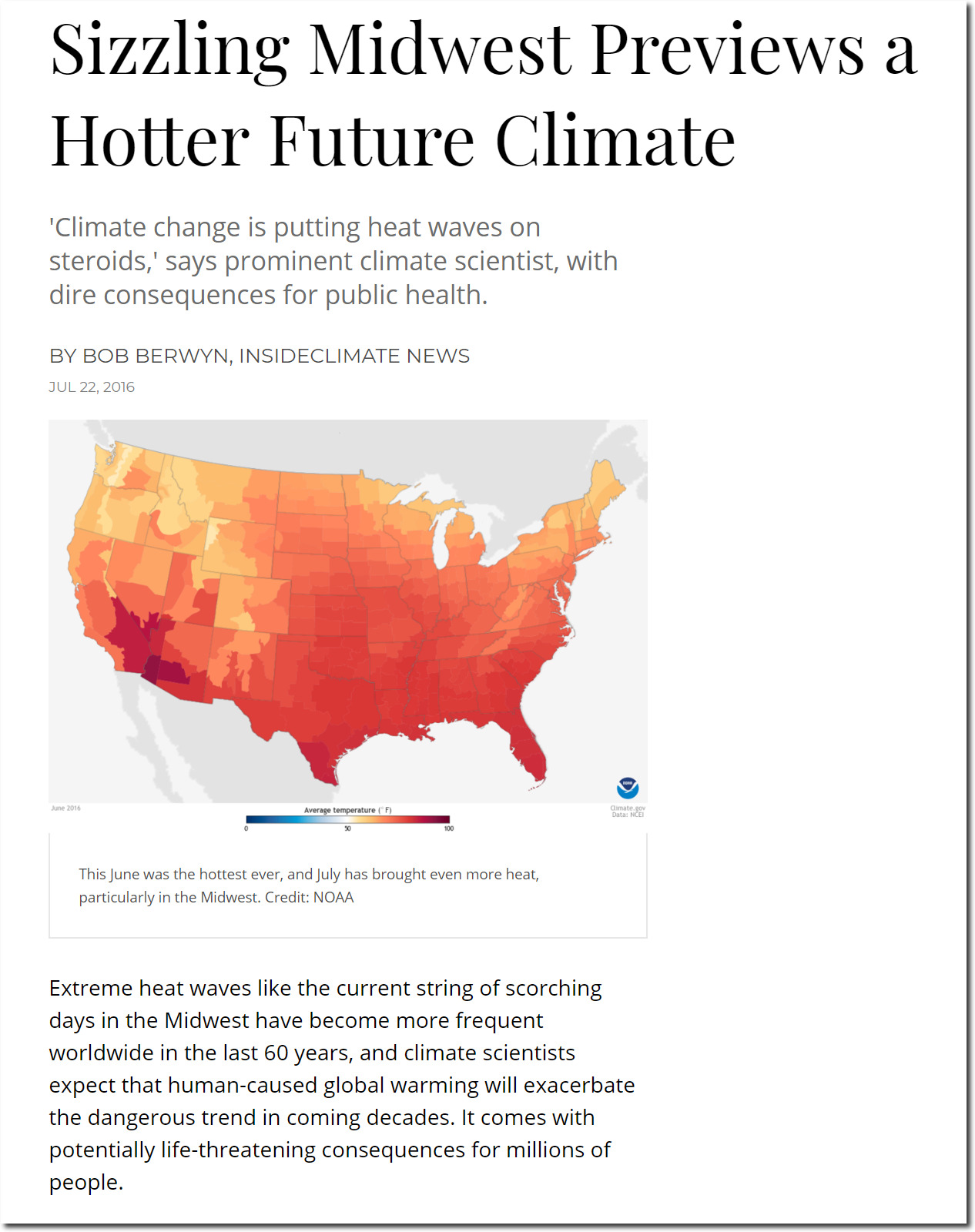“Human beings never think for themselves; they find it too uncomfortable. For the most part, members of our species simply repeat what they are told – and become upset if they are exposed to any different view.”
– Michael Crichton
Spreadsheet (shows every 90 and 100 degree USHCN temperature in the Midwest since 1895)
Prior to 1957, hot weather was very common in the Midwestern US – but over the past 62 years the likelihood of hot weather has plummeted. In 1936, the Midwest had 86 days with at least one station reporting 100F. In 1934 they had 78 days over 100F. By contrast, recent years have had almost no days over 100F. And 90 degree days show the same declining trend.
This is of course the exact opposite of what professional climate fraudsters report.
Sizzling Midwest Previews a Hotter Future Climate | InsideClimate News
The spreadsheet shows every 90 and 100 degree USHCN temperature reading in the Midwest since 1895. But my experience is that climate alarmists refuse to look at thermometer data, because they say it is “conspiracy theory”




